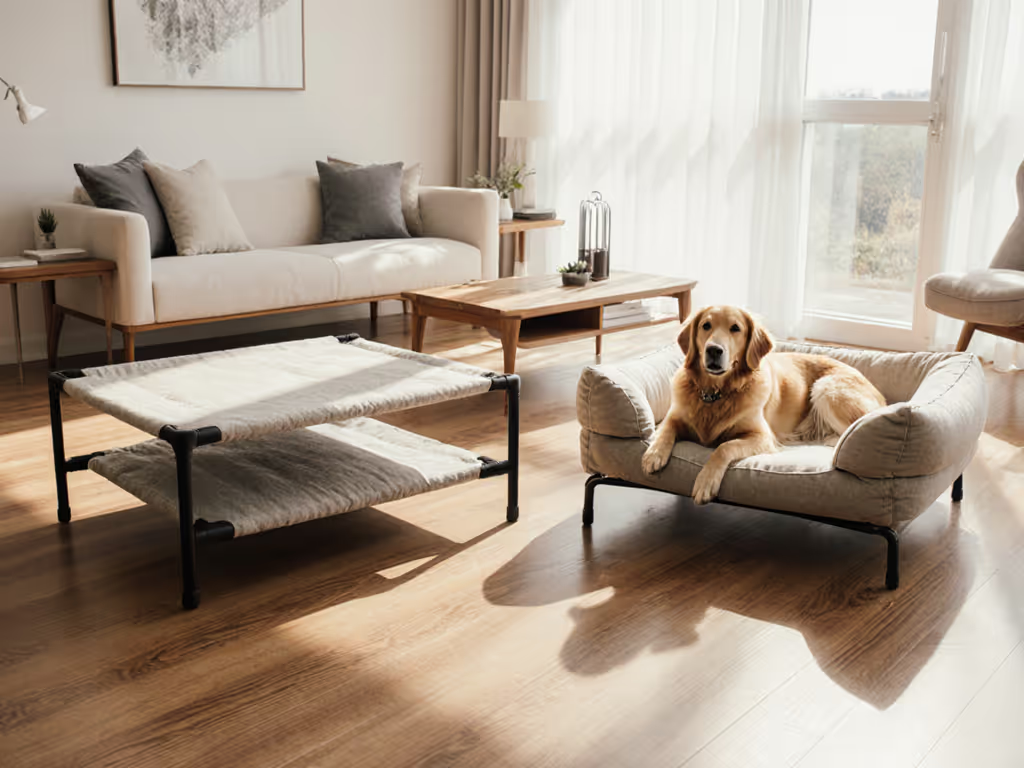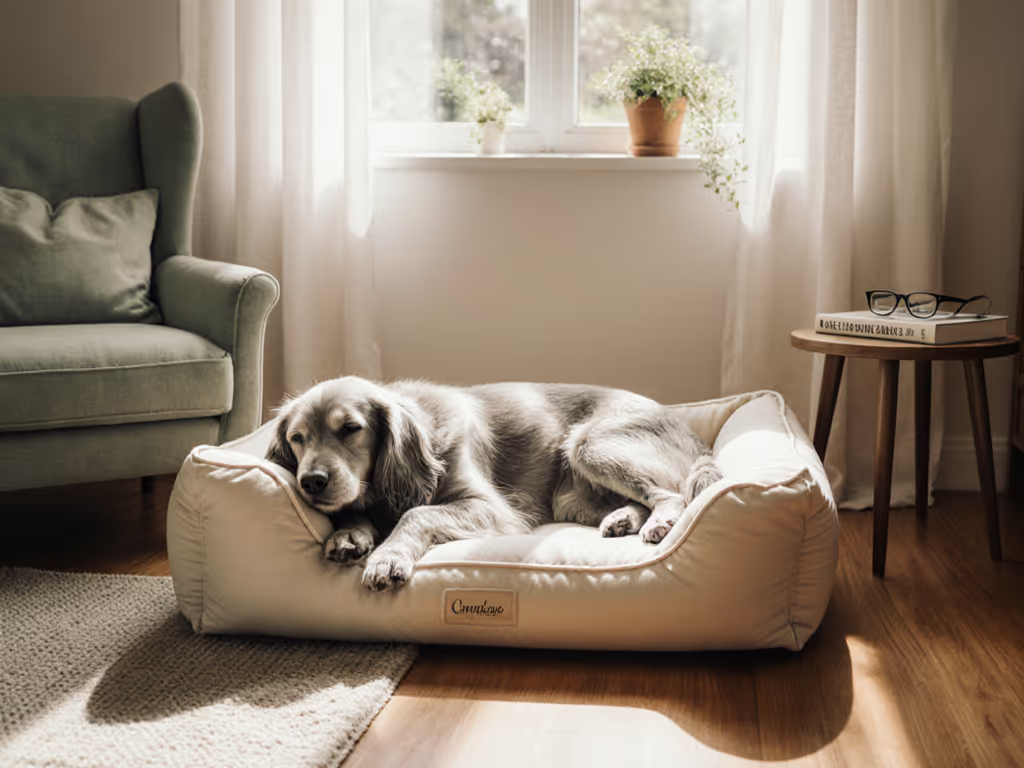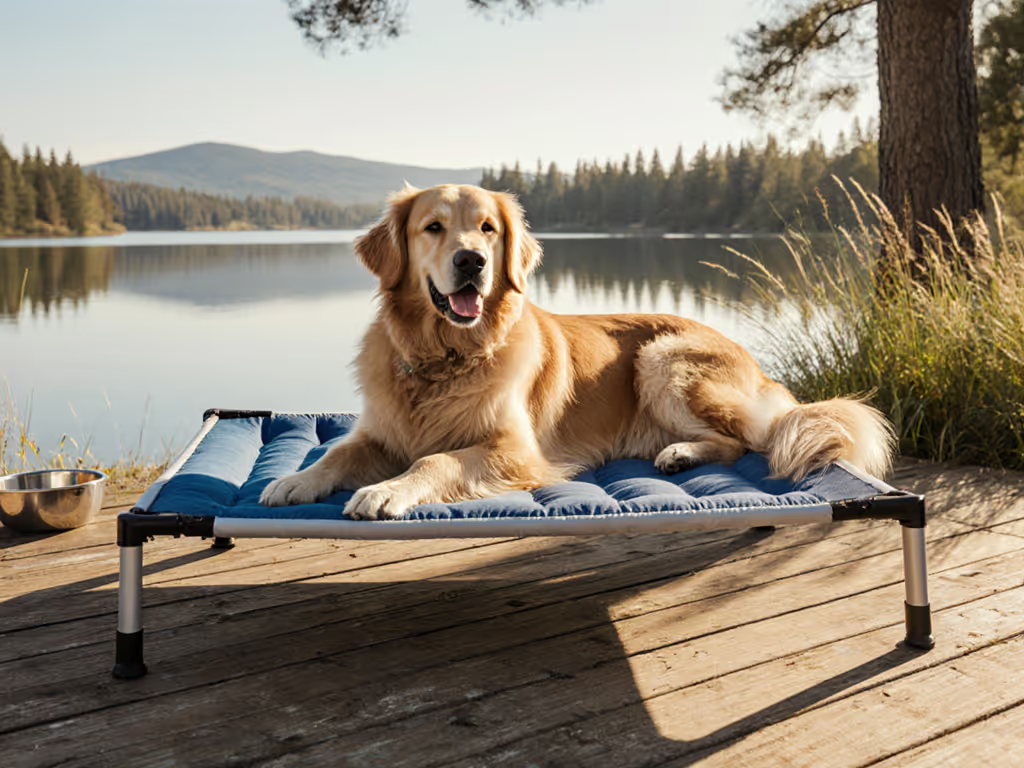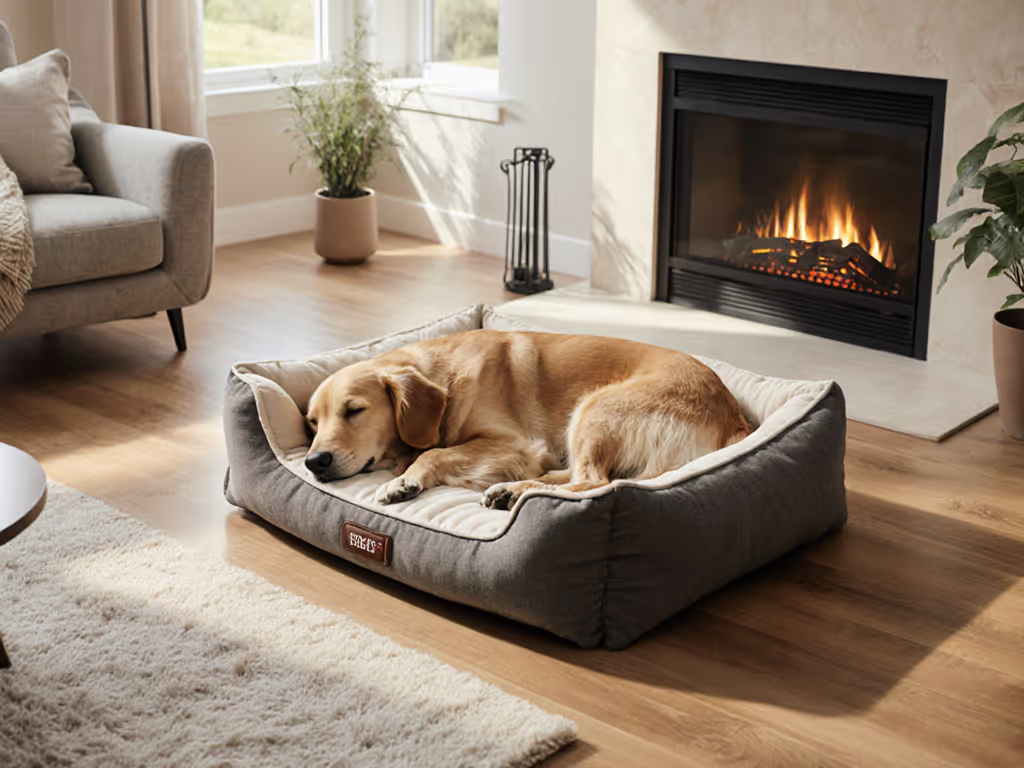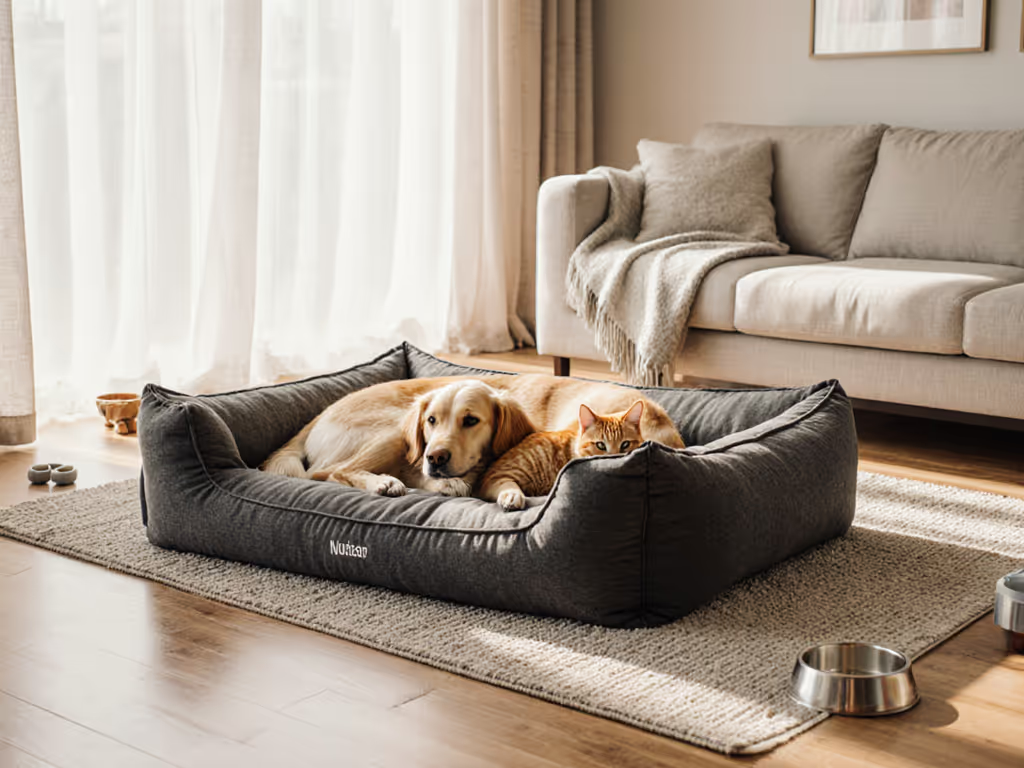
Crate Bed Sizing: Cot vs Standard Compared
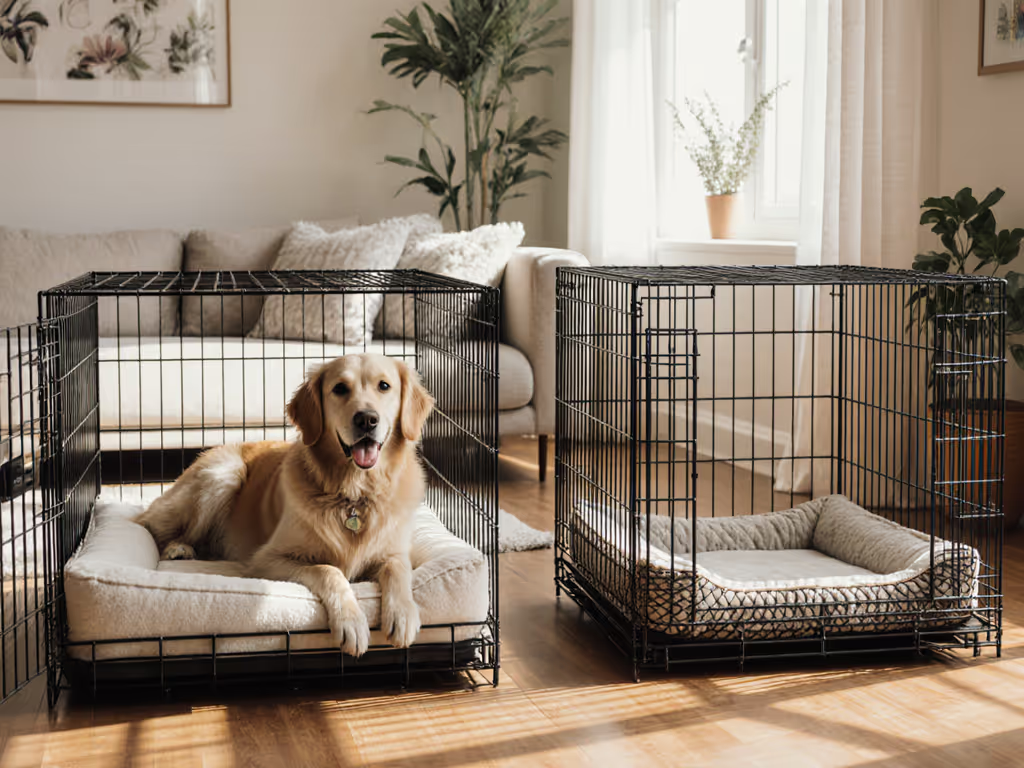
When your dog hesitates before entering their crate or shifts uncomfortably through the night, you're dealing with more than just a crate bed sizing issue, it is a mismatch between their natural posture and the support they receive. As someone who's spent years studying sleep posture mapping for sensitive dogs, I've learned that real comfort starts with alignment, then temperature and texture. This truth emerged when I fostered a stiff-moving senior shepherd whose side-sleeper curl finally found relief in a properly sized bolstered bed that kept him cooler. Choosing between a cot dog bed and standard cushion doesn't have to be confusing, so we'll break it down step by step to find what truly supports your dog's unique sleep style.
Understanding Your Dog's Sleep Posture
Before selecting a crate bed, identify how your dog naturally sleeps. This isn't about breed stereotypes. It is about observing their body language.
Mapping Common Sleep Styles
Observe your dog for several nights to determine their preferred position:
- Curlers: Tuck paws beneath their body with spine curved (common in nervous or cold-sensitive dogs)
- Sprawlers: Extend all four limbs outward, often lying on their side or back
- Leaning dogs: Rest heads or bodies against crate walls or bolster edges
- Burrowers: Dig at bedding before settling in a deep indentation
Curlers typically need a rounded bolster for gentle head and neck support that mirrors their natural posture. Sprawlers benefit from flat, expansive surfaces that distribute weight evenly across joints. Leaning dogs need stable, firm edges that won't collapse under pressure. Burrowers require deeper cushioning that resists permanent flattening. See our guide to dog sleeping positions to match bed shapes to your dog's posture.
Gentle, precise guidance starts with reading your dog's posture first, then matching materials to support it.
Step 1: Measure Your Dog Correctly
Forget breed charts. They are starting points, not definitive guides. Your dog's measurements matter more than their weight or breed alone. Use our dog bed measuring guide for step-by-step instructions and common mistakes to avoid.
The Proper Measurement Process
- Gather Supplies: Soft measuring tape, notepad, and your dog's favorite treat
- Position Your Dog: Wait until they're naturally lying down or encourage them with a treat
- Measure Length: From nose tip to base of tail (not the full tail length)
- Add 4 Inches: This accounts for natural stretching and movement during sleep
- Measure Height: From floor to highest shoulder point (critical for raised beds)
- Note Sleep Style: Record whether they curl, sprawl, or lean as you measure
A 50-pound Labrador that sleeps fully extended needs different crate dimensions than one that curls tightly. This explains why many dogs ignore beds that "should" fit according to weight charts (they are fighting against their natural posture).
Step 2: Measure Your Crate Accurately
Crate dimensions differ from bed dimensions (especially with raised beds that need clearance).
Critical Crate Measurements
- Interior Length: Front to back inside the crate (where your dog lies)
- Interior Width: Side to side inside the crate
- Height Clearance: Floor to crate top when crate is assembled
- Pan Consideration: Remove any factory pan when measuring for raised beds
For raised dog bed in-crate setups, subtract at least 2 inches from your crate's interior dimensions to ensure proper clearance. Standard cushion beds require less height clearance, but need precise width measurements since they sit directly on the crate floor.
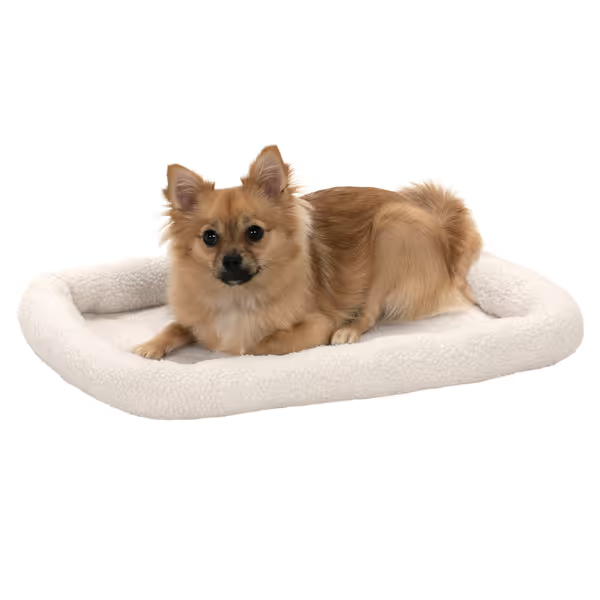
Furhaven Sherpa Fleece Bolster Crate Pad
Step 3: Compare Cot vs Standard for Your Dog's Needs
Understanding how each bed type supports your dog's posture and temperature regulation is crucial for proper crate bed comfort.
Temperature and Airflow Analysis
| Feature | Cot/Raised Bed | Standard Cushion Bed |
|---|---|---|
| Airflow | 360-degree ventilation beneath sleeping surface | Limited airflow, heat builds between bed and crate floor |
| Cooling | Ideal for hot climates, brachycephalic breeds, or dogs that overheat | Requires cooling gels or frequent flipping to prevent heat buildup |
| Heating | Less insulation (may need thermal layer in cold climates) | Better natural insulation from trapped air in cushioning |
Raised beds excel in temperature regulation through natural airflow, which supports body-aware sleeping. Standard cushion beds create a microclimate that can either help or hinder depending on your dog's sensitivity. For dogs with joint issues, the consistent temperature of a raised bed prevents painful thermal shifts during sleep cycles. If overheating is an issue, compare options in our best cooling dog beds roundup.
Pressure Distribution Comparison
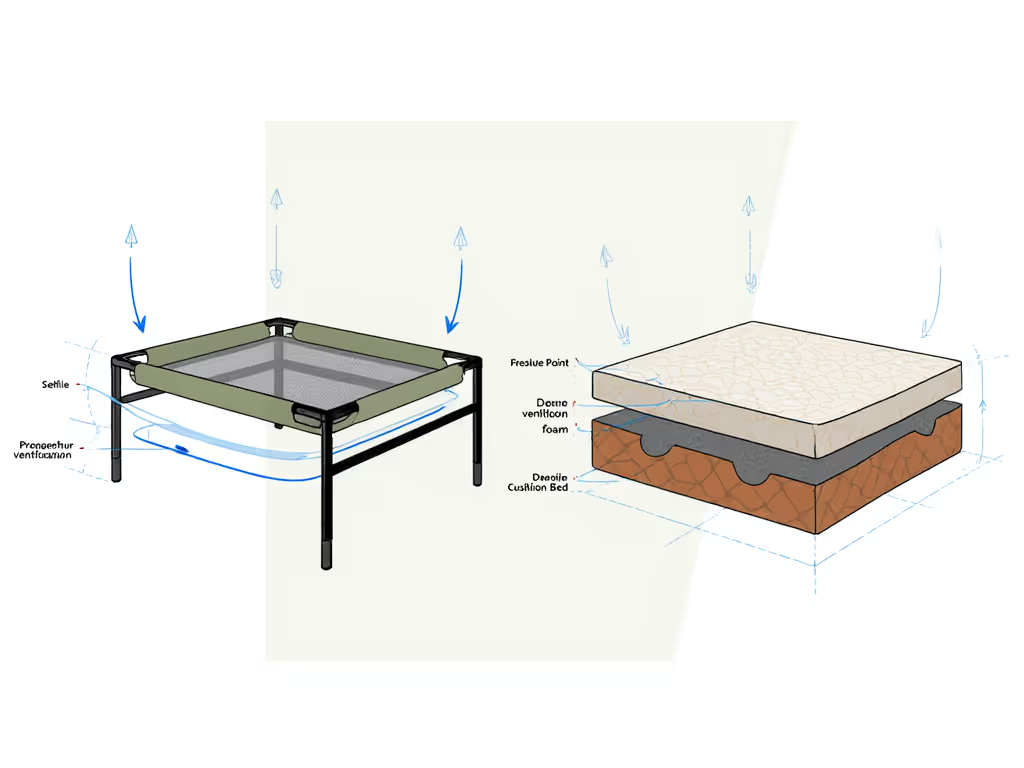
Cot/Raised Beds:
- Even pressure distribution across entire body
- Reduced joint compression (especially hips and elbows)
- Better spinal alignment for sprawling sleepers
- Minimal "sink" that can trap dogs with mobility issues
Standard Cushion Beds:
- Pressure points develop where body sinks deepest
- Foam quality determines whether support maintains throughout sleep
- Better for curlers who want surrounding support
- Requires higher density foam to prevent "hammocking"
Raised beds distribute weight evenly like a supportive waterbed, while standard beds create a hammock effect that can strain joints if not properly sized. Many senior dogs initially resist cushion beds, but settle comfortably on properly fitted raised options.
Step 4: Sizing for Safety and Function
Proper crate bed safety depends on both dimensions and stability. For materials and design hazards many owners miss, read our non-toxic dog bed safety guide.
Critical Safety Considerations
- No Hanging Edges: Bed should not extend beyond crate walls where paws could get trapped
- Stability Test: Apply gentle pressure to ensure bed doesn't shift or rock
- Clearance Check: At least 2 inches between raised bed frame and crate walls
- Non-Slip Bottom: Essential for both types to prevent dangerous sliding
- Height Appropriateness: Raised beds shouldn't force dogs to jump excessively
A bed that's "almost" the right size creates significant safety risks. A dog crate mat that's too large can bunch up, creating tripping hazards, while a raised bed that's too small offers inadequate support surface. For brachycephalic breeds, ensure raised beds do not restrict airflow around the face when sleeping.
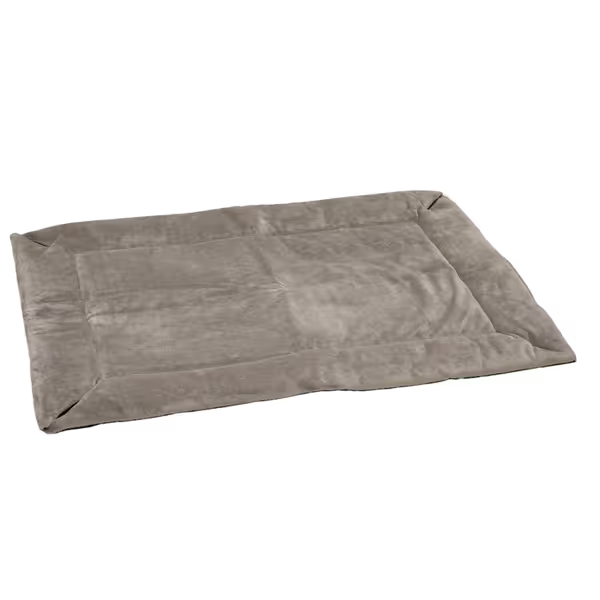
K&H Self-Warming Crate Pad
Step 5: Matching Material to Your Dog's Needs
Material choice directly impacts crate bed comfort, especially regarding temperature regulation. Not sure which textiles hold up? See our breakdown of dog bed fabrics that survive digging and washing.
Breathable vs. Insulating Materials
- Raised Bed Fabrics: Look for tightly woven mesh that supports weight without sagging
- Cushion Bed Fabrics: Opt for removable, machine-washable covers with natural fibers
- Avoid: Vinyl or plastic-coated surfaces that trap heat and create uncomfortable sticking
- Consider: Removable covers for easy cleaning (critical for dogs that drool or have incontinence issues)
A self-warming crate pad that uses microfleece provides gentle warmth without heat trapping, ideal for senior dogs in drafty homes. For dogs that overheat, a sherpa fleece option offers a compromise with softer insulation that still allows some airflow.
Step 6: Final Verification Before Purchase
Before committing to a bed type, verify these critical points:
- Sleep Style Match: Does the bed support their natural posture?
- Temperature Assessment: Will it keep them comfortable in your home's climate?
- Space Verification: Does it fit with adequate clearance for movement?
- Safety Check: No tripping hazards or unstable elements?
- Cleaning Practicality: Can you easily maintain it?
When in doubt, size up, especially for growing puppies or multi-dog households. A slightly larger bed accommodates natural movement better than one that is "just" the right size. Remember that bolstered edges on standard beds reduce the usable sleeping surface by 2 to 3 inches on each side.
Actionable Next Steps for Confident Selection
Real comfort starts with alignment, then temperature and texture (never with aesthetics alone). Your dog's body language tells the most honest story about what they need. Today, take these three actions:
- Measure your dog as they sleep naturally, adding 4 inches to their nose-to-tail length
- Measure your crate's interior dimensions without the factory pan
- Observe their sleep posture for three consecutive nights
With these measurements in hand, you'll confidently select between a cot dog bed and standard cushion (not based on marketing claims, but on your dog's genuine comfort needs). The right crate bed sizing transforms reluctant crate time into restful refuge, one properly supported snooze at a time.

